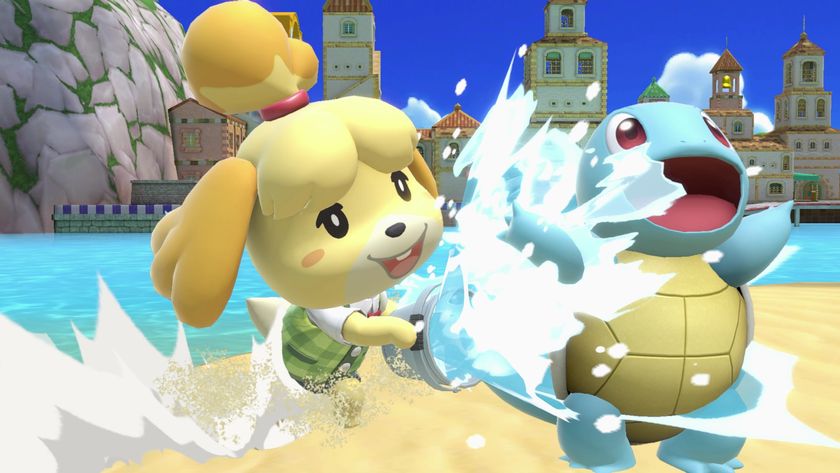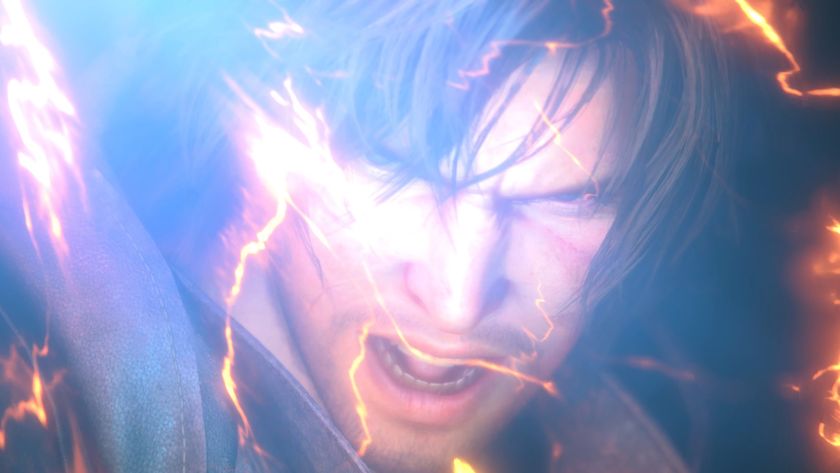The making of Samurai Shodown, one of the sharpest fighters of the '90s
Yasushi Adachi tells us how his team crafted one of the sharpest fighters of the era
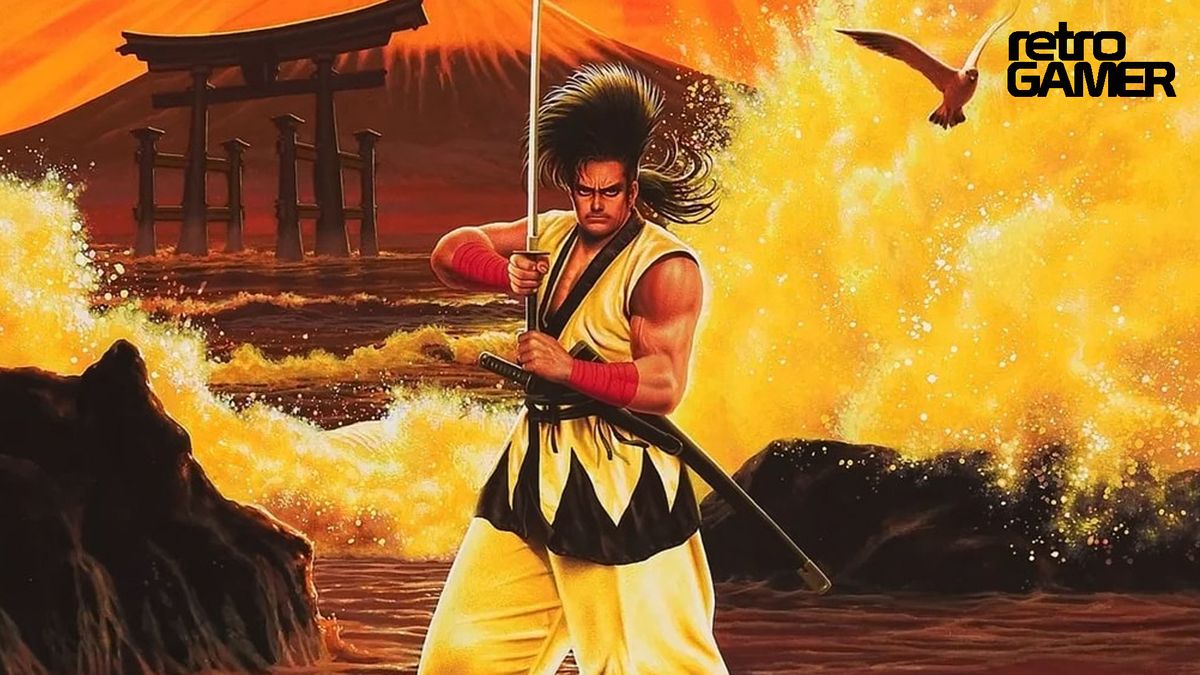
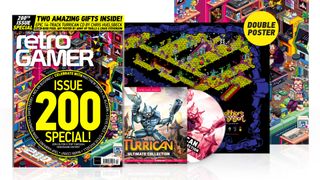
Love retro gaming? From SNES to Mega Drive, PSOne to Xbox, and Spectrum to C64, Retro Gamer magazine delivers amazing features and developer interviews about history's best games every month, and you can save up to 57% on a print and digital subscription right now.
In a duel between samurai, victory is often sudden and emphatic. In the blink of an eye, a flash of steel accompanies a swift swing of the sword, and it's all over. The winner moves on to the next fight – the loser, more often than not, moves on to the next plane of existence. In the early Nineties, fighting games were booming but they were predominantly based on bare-knuckle brawling. SNK changed that with Samurai Shodown, a game that brought the drama and danger of sword fights to the arcade. As well as being a success in its own right, the game began one of gaming's greatest 2D fighting series and furthered SNK's claim to mastery of the fighting genre.
The funny thing about Samurai Shodown was that initially it wasn't meant to be a one-on-one fighting game at all. Instead it was to be a scrolling beat-'em-up, more in the manner of a game like Sengoku – and rather than featuring samurai characters, the main heroes were monsters. Why was the original concept so radically changed? According to Yasushi Adachi, director of Samurai Shodown, it had a lot to do with Street Fighter II: "After experiencing the dynamism of the fighting game that was dominating the arcade and console game scene at that time, we asked ourselves what kind of game design we could do, and decided to challenge that masterpiece!"
With the concept of creating a fighting game now set in stone, the team looked to find ways of differentiating its game from the crowd. "In order to challenge the most popular fighting game of this era, we knew there were two things we had to do," explains Adachi. "The first was to introduce the notions of living and dying. Characters wouldn't be beaten by fi sts, but would lose their life via blades/weapons, giving more impact and tension to the player's experience. The second was to have a deep and detailed background and storyline for every character. Therefore, players won't see and play characters as 'icons', but will see them as living, breathing people. Through this connection players will feel more motivated to protect their characters during battle, and have a strong and memorable gameplay experience with the life and death concept and the unique combatants in the game."
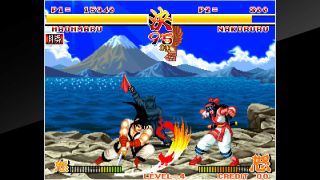
Having made the decision to move away from monster characters, Adachi decided on a historical setting for the game. This affected everything, right down to the title of the game. "I love samurai and ninja, which are representative of the Japanese culture, and decided to choose the word 'samurai' in order to accentuate the notion of life and death so present in this specific Japanese culture." The other half of the title – at least in Japan – was drawn from a shoot-'em-up, of all things. "The Japanese title Samurai Spirits was originally inspired by Dragon Spirit, and we aimed to merge the words samurai and spirit (soul, etc) alongside Japanese culture."
Samurai Shodown's game design built on SNK's growing experience in the fighting game market. The company had seen success with Fatal Fury and Art Of Fighting, and Samurai Shodown drew a number of elements from the latter in particular. The game also followed the trend towards more graphic violence in fighting games, with plenty of bloodshed and depictions of death – albeit nothing quite so outrageous as in Mortal Kombat. The game also included plenty of its own mechanical advances, including the concept of disarming the opponent in weapon clashes.
But Samurai Shodown differed from every other fighting game available in its treatment of damage. Where the prevailing trend in fighting games was for players to string together lots of attacks into a painful combo, Adachi's vision was for single hits to do major damage. "I know that even now this kind of extremely high damage that can change the outcome of the battle in one single hit is subject of complaints from players (who are usually laughing when they do this)," says Adachi. "In this case, I will apologise and laugh at the same time!" Of course, while this approach had its detractors, it did successfully convey the feeling of danger that Adachi had wanted. He was also acutely aware that even great games can make players salty – in a 2017 interview with Polygon, Tomoki Fukui explained that while researching Samurai Shodown, a frustrating Street Fighter II loss caused the director to fume in silence for a minute. This inspired the Rage gauge, which gave a boost to players that had taken a beating.
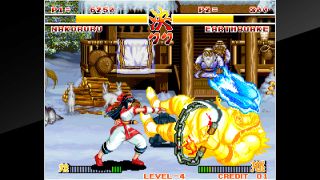

Final Fantasy 7 – how Square made one of the most important and influential RPGs of all time
In order to achieve the deeper level of identification between the player and their character that Adachi desired, a number of characters were notably based on legendary historical figures – something made possible by the historical setting of the game. "This was also because I always loved samurai and ninja from Japanese culture and history," says Adachi. There are some fairly obvious examples, such as Jubei Yagyu and Hanzo Hattori, but even those characters that don't bear famous names carry some historical influence.
Sign up to the 12DOVE Newsletter
Weekly digests, tales from the communities you love, and more
"Haohmaru was called 'Musashi' and Ukyo 'Kojiro' during the development of the game," Adachi explains. "Despite us changing their names in the middle of the development phase, most of the team members kept on calling them Musashi and Kojiro!" These names were intended to indicate their status as rivals – Japanese history buffwill likely know that the names reference the renowned samurai Musashi Miyamoto and his rival Kojiro Sasaki, who fought a fatal duel in 1612.
Fighting spirit
Two characters that you wouldn't necessarily connect are Ukyo, a beautiful fighter who has women chasing him wherever he goes, and the monstrous Gen-An – both of whom Adachi wanted to include because he "always loved 'dark heroes'." For Gen-An, the darkness is obvious but the reason for a non-human combatant is somewhat less so, until it's explained. "Monsters were supposed to be the main characters in the original concept of Samurai Shodown, and only Gen-An survived in the end," we're reminded, though Adachi notes "I think that Kubikiri Basara who appeared for the first time in Samurai Showdown III is Gen-An's spiritual successor."
For Ukyo, the darkness is less obvious, but is drawn from the fact that he suffers from terminal tuberculosis – an unusual trait for a fighting game character. "I think because of the deep themes of life and the 'live or die' aspect always represented in the game, the concept and presence of a character that had to fight while suffering from a disease at the same time was something that felt almost natural."
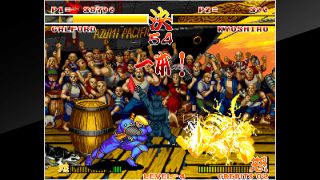
Gen-An wasn't the game's only outlandish and striking character – Earthquake, the colossal Texan bandit, had a fart attack and took up an enormous portion of the screen. So much, in fact, that he was something of a bad idea. "After some thought, it was a bit too much. We shouldn't have created such a character for various development and game balance reasons," Adachi admits. "However, at that time, the team was so serious about Earthquake's addition to the game, no matter if it would create issues afterwards. I remember being asked by designers who were showing Earthquake on-screen if he was big enough, and I replied to them, 'Not enough! Bigger, bigger!' Therefore, they reworked the character size, and asked me later (while grumbling) if he was finally big enough for me, and I said, 'Let's go with it!'"
While you might expect that such a character would pose problems with memory and sprite drawing, this was apparently only a problem with Earthquake in certain circumstances. "The biggest hardships we had in development were definitely on the game balance side. However, this was extremely well done thanks to the awesome work from Mr Fukui, the planner in charge of that task at the time, and who still works with me today," Adachi explains. "The other issue with Earthquake was that the other characters couldn't use their throw attacks on him because of his huge size and this animation was taking up too much memory in the game. It was tough, but we were able to create a workaround to solve this problem in the end by creating a special throw animation just for him."
Despite the decidedly Japanese feel of the game, quite a few of the 12 fighters were foreigners – we've already mentioned Earthquake, but we also have French fencer Charlotte and the Californian ninja Galford. "This was to lighten the heavy atmosphere of blade wielding combatants, and give a more festive feeling to the game. We didn't want to make it feel too serious," Adachi reveals. "It was also a dream of mine to create a blue-eyed ninja," he adds, referring to Galford. In fact, when you take into account his husky, Poppy, we start to get the feeling that Galford was something of a wish fulfillment character all around – when we asked why animals were included Adachi replies, "This is simply because I love animals." Surely there's more to the story than that? "When I was a kid I yearned to travel on a journey with pets, and I possibly attempted to fulfill that dream by including animals in Samurai Shodown," Adachi elaborates.
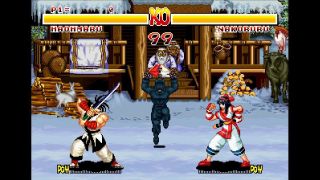
“Monsters were supposed to be the main characters in the original concept, and only Gen-An survived in the end
Yasushi Adachi
Gen-An wasn't the game's only outlandish and striking character – Earthquake, the colossal Texan bandit, had a fart attack and took up an enormous portion of the screen. So much, in fact, that he was something of a bad idea. "After some thought, it was a bit too much. We shouldn't have created such a character for various development and game balance reasons," Adachi admits. "However, at that time, the team was so serious about Earthquake's addition to the game, no matter if it would create issues afterwards. I remember being asked by designers who were showing Earthquake on-screen if he was big enough, and I replied to them, 'Not enough! Bigger, bigger!' Therefore, they reworked the character size, and asked me later (while grumbling) if he was finally big enough for me, and I said, 'Let's go with it!'"
While you might expect that such a character would pose problems with memory and sprite drawing, this was apparently only a problem with Earthquake in certain circumstances. "The biggest hardships we had in development were definitely on the game balance side. However, this was extremely well done thanks to the awesome work from Mr Fukui, the planner in charge of that task at the time, and who still works with me today," Adachi explains. "The other issue with Earthquake was that the other characters couldn't use their throw attacks on him because of his huge size and this animation was taking up too much memory in the game. It was tough, but we were able to create a workaround to solve this problem in the end by creating a special throw animation just for him."
Despite the decidedly Japanese feel of the game, quite a few of the 12 fighters were foreigners – we've already mentioned Earthquake, but we also have French fencer Charlotte and the Californian ninja Galford. "This was to lighten the heavy atmosphere of blade wielding combatants, and give a more festive feeling to the game. We didn't want to make it feel too serious," Adachi reveals. "It was also a dream of mine to create a blue-eyed ninja," he adds, referring to Galford. In fact, when you take into account his husky, Poppy, we start to get the feeling that Galford was something of a wish fulfillment character all around – when we asked why animals were included Adachi replies, "This is simply because I love animals." Surely there's more to the story than that? "When I was a kid I yearned to travel on a journey with pets, and I possibly attempted to fulfill that dream by including animals in Samurai Shodown," Adachi elaborates.
Way of the samurai
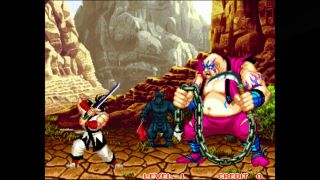
Despite the fact that SNK was in the early stages ofits rise to prominence as a fighting game developer, Samurai Shodown was far from a protected project – in fact, it was a game that seemed to concern the upper management. "The company didn't have a lot of expectations for this game, but I knew it would be a hit. I remember being asked by a board member at the time what I would do if the game would be a flop and didn't sell at all," says Adachi. "I replied that I would take full responsibility and quit SNK. Of course, I knew Samurai Shodown would be a hit, and had no intention to leave the company!"
Fortunately for Adachi, he was on the money regarding the game's fortunes, as Samurai Shodown quickly achieved success after its arcade release in July 1993. The Neo-Geo AES version was one of the first games for the system that didn't come home strictly arcade perfect – due to the ongoing controversy over violence in videogames, SNK decided to censor blood on non-Japanese consoles. It didn't matter which version of the game you played as the data was identical worldwide, so importers were out of luck unless they wanted to pick up a Japanese console. It all seemed a little silly – as one poster on the alt.games.sf2 newsgroup reasonably asked, "How many nine-year-olds own a $500 Neo-Geo?" Despite this minor controversy, the Neo-Geo AES version of the game was very popular with the system's small audience, and is one of the more widely available and affordable games for the system today.
Reviews of the Neo-Geo home cartridge version were very positive. In an 8/10 review, Edge described it as "arguably the best one-on-one beat-'em-up on any home system", commenting that the blood-soaked action was "disturbingly satisfying". All four reviewers in Electronic Gaming Monthly awarded the game 9/10, with Ed Semrad calling the game "a graphic masterpiece that cannot be rivalled". Criticism was directed at character balance in GamePro's review, with Earthquake and Nakoruru being singled out as "too cheap" and "too weak" respectively, but the reviewer felt that the game "is in many ways clearly superior to the original Street Fighter II". Though noting that it "has its work cut out for it against Super Street Fighter II," Samurai Shodown earned perfect scores in all categories and was described as "one of the two best fighting games of all-time."
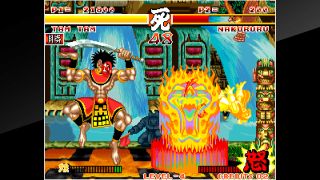
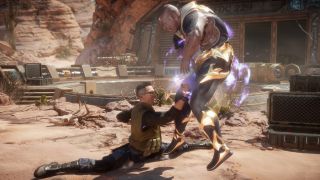
The 25 best fighting games of all time
A variety of home releases followed for all manner of other platforms – as well as conversions for the mainstream Mega Drive and SNES, the game made handheld appearances on the Game Gear and Game Boy, with the latter proving to be particularly enjoyable. But Samurai Shodown was also at the forefront of a new generation of consoles, and the Neo-Geo CD, FM Towns and 3DO delivered the most faithful contemporary conversions. SNK was sure to capitalise on the success ofits unique fighting game, with the first of many sequels arriving in 1994. A number of spin-off projects were also produced, from an animated TV adaptation to games like Samurai Spirits RPG and the Nakoruru visual novel, and Samurai Shodown characters have appeared in crossover games including The King Of Fighters series, SNK Heroines and the Capcom Vs SNK games.
Although he now heads up the studio Engines and no longer works on Samurai Shodown, Adachi remains fond of the series. "SNK has successfully survived throughout many hardships over the years, and constant changes in the videogame industry," he enthuses.
"The company has always taken care of the Samurai Shodown brand, and I sincerely and deeply thank them for this." Indeed, it's easy to see that the company places a great deal of importance on Samurai Shodown – it was the series chosen to launch the Hyper Neo-Geo 64 system, and the series that brought an end to Neo-Geo cartridge releases. SNK recently revived the series with a game simply titled Samurai Shodown, which has been well received due to its uniqueness and focus on fundamental fighting game strategy – qualities that it possesses largely because it has stuck to the principles of the original game, with high damage and minimal combos. That's a testament to the work of Adachi and the rest of the team at SNK. Gaming has changed considerably since 1993, but Samurai Shodown's distinctive style of fighting remains a cut above the competition.
Save up to 57% on a Retro Gamer magazine subscription bundle and have the best retro gaming features and interviews delivered to your door each month
Nick picked up gaming after being introduced to Donkey Kong and Centipede on his dad's Atari 2600, and never looked back. He joined the Retro Gamer team in 2013 and is currently the magazine's Features Editor, writing long reads about the creation of classic games and the technology that powered them. He's a tinkerer who enjoys repairing and upgrading old hardware, including his prized Neo Geo MVS, and has a taste for oddities including FMV games and bizarre PS2 budget games. A walking database of Sonic the Hedgehog trivia. He has also written for Edge, games™, Linux User & Developer, Metal Hammer and a variety of other publications.

